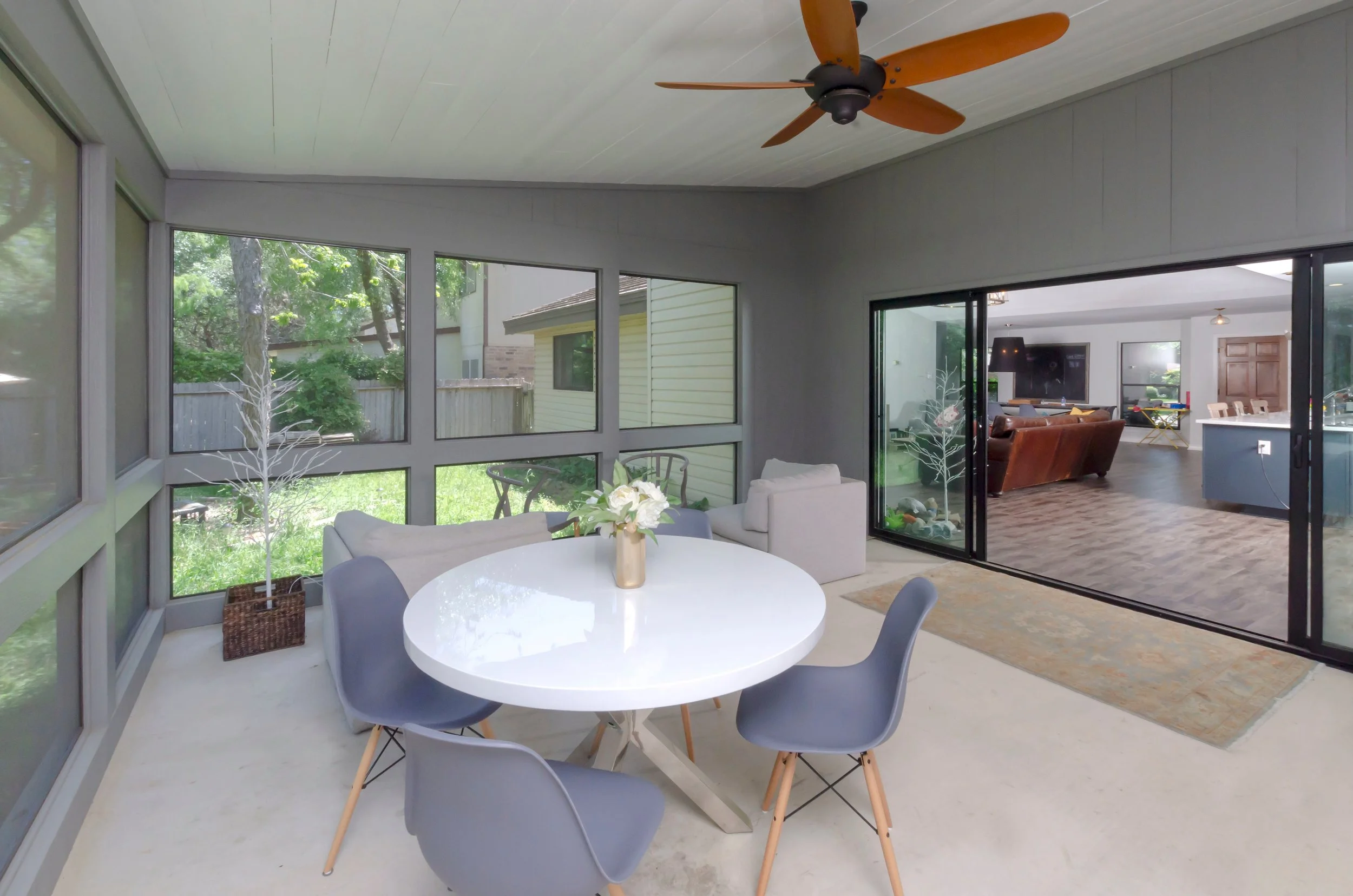Beating the Texas Heat with Smart Design
In South Texas, summer isn’t just a season—it’s a test of how well your home is built. If your space feels constantly warm, your energy bills are climbing, or your air conditioning can’t keep up, the solution may not be more cooling power. It might be smarter design.
With the right remodeling decisions, you can transform your home into a cooler, more comfortable space—without sacrificing style or breaking the bank. Whether you're planning a full remodel or looking for strategic updates, here’s how smart design choices can help you beat the Texas heat.
Seal the Deal with Smarter Windows and Doors
The fastest way for summer heat to sneak into your home? Outdated windows and poorly sealed doors. Replacing them with energy-efficient windows—like double-pane glass with Low-E coatings—can significantly cut down on indoor heat gain while still allowing in natural light.
Remodeling also offers the opportunity to rethink window placement entirely. Positioning windows based on sun exposure and room usage limits overheating, especially in south- and west-facing spaces. Add features like overhangs, awnings, or exterior shades for even better solar control.
Insulation: Your Invisible Cooling Partner
One of the most effective ways to keep your home cool in the summer is hidden behind the walls. Upgrading insulation in your attic, walls, and floors helps maintain consistent indoor temperatures and lowers utility costs.
In hot climates like San Antonio, materials such as spray foam or blown-in cellulose are excellent for blocking heat transfer. Combine that with thorough air sealing around vents, outlets, and windows, and your home will hold onto cool air more efficiently—while keeping hot air out.
Cool From the Top Down: Reflective Roofing & Finishes
Your roof is the first line of defense against the Texas sun. Traditional shingles can reach surface temps of 150°F or more. Choosing reflective roofing materials—like metal panels or cool roof shingles—helps bounce that heat away before it seeps indoors.
Light-colored siding, stone, and stucco can also reduce heat absorption, making a noticeable difference in indoor comfort. And inside the home, materials like tile, natural stone, and breathable finishes keep things feeling cool underfoot.
Make Shade a Design Feature
Covered patios, pergolas, and screened porches aren’t just for aesthetics—they’re practical tools for reducing heat. Shaded outdoor living areas help protect your windows from direct sun and give you a comfortable space to enjoy fresh air, even during the hottest months.
By incorporating features like ceiling fans, light-filtering screens, and ventilated roofing, you can turn an exposed backyard into a cool and inviting extension of your home.
Rethink Your Floor Plan for Year-Round Comfort
Smart remodeling means thinking about how air moves through your space. Open layouts, cross-ventilation, and well-placed operable windows support better airflow and reduce hot spots.
Remodeling also gives you a chance to optimize room orientation. For example, relocating bedrooms away from harsh evening sun or designing a kitchen that stays cool during peak cooking hours can have a big impact on how livable your home feels—especially in summer.
Staying comfortable during a Texas summer doesn’t mean relying solely on your air conditioner. With the right materials, insulation, layout, and outdoor features, your home can be naturally cooler, more energy-efficient, and far more enjoyable to live in year-round.
Whether you're exploring home remodeling in Texas or looking for energy-efficient design ideas, thoughtful upgrades today can make all the difference tomorrow—especially when the heat is on.
Is your home designed to handle the Texas heat—or is it time for a smarter solution?




